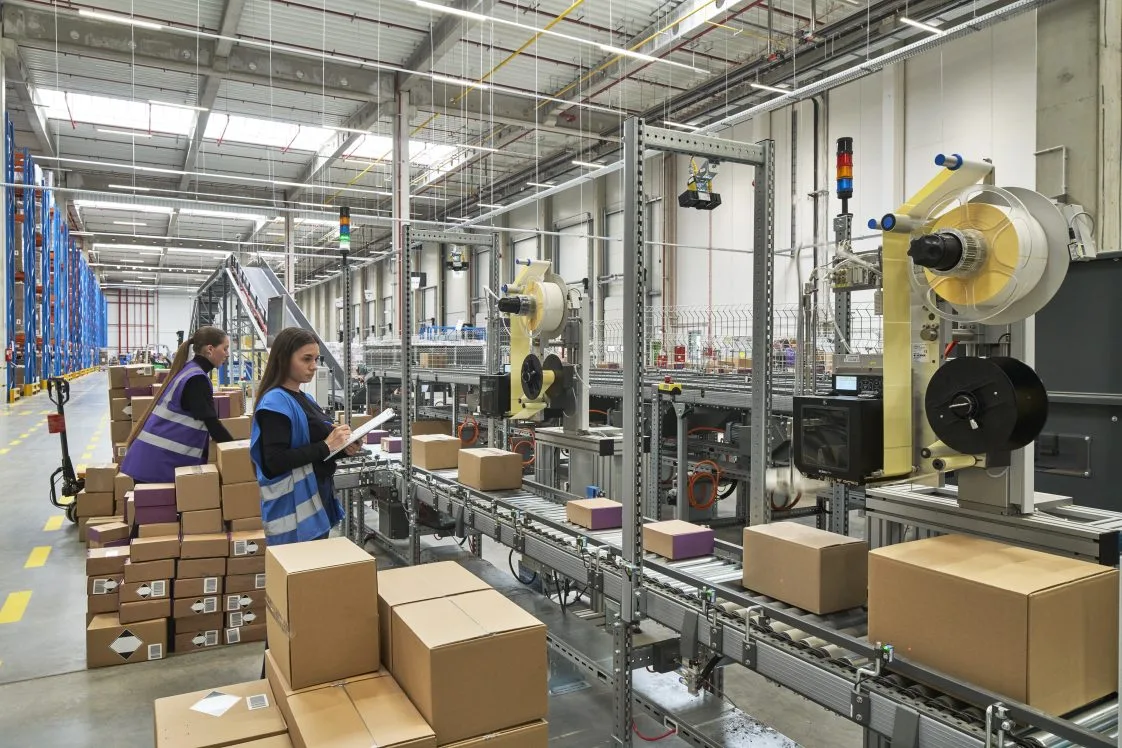Shaping retail – top 2024 eCommerce trends
As the eCommerce industry continues its growth trajectory in Europe, let’s delve into the trends that will leave a mark. This article unpacks the significant influences set to shape online shopping and businesses in the upcoming year. Join us in uncovering the major influences that will define the retail scene in 2024.
Retail is in the midst of riding out what we hope are the final waves of pandemic-induced upheaval: the evening out of supply chain disruptions, a final handling of excess inventory, better forecasting in sustained economic uncertainty riddled with high inflation and interest rates, and higher operational costs.
The eCommerce industry in Europe is forecast to continue to grow, at least until 2027. According to ECBD’s analysis: “the market grew steadily from US$308 billion in 2017, reaching a peak of US$649 billion in 2021. However, 2022 saw a decline to US$590 billion. The forecast indicates a rebound in 2023, with revenue expected to grow to US$621 billion. It’s projected to set a new peak in 2024, reaching US$658 billion.”
As eCommerce businesses enter 2024, what major trends will shape the industry? In this article, we take a look at the top trends we believe will have a major impact.
Top retail trends impacting 2024
Predictions abound regarding what will become important in retail over the next year. At Radial, we work with major players in the eCommerce industry, which provides us with a robust network of aggregated data that helps us serve each retail client individually. This network-effect data is vital to understanding not just what analysts say is important, but what retailers themselves believe matters. We anchor our insights on real-world, on-the-ground experience of those facing the struggles and challenges. As a third-party logistics company, we face innovate on those challenges ourselves.
As you explore these trends, we invite you to consider your business’s unique situation, strengths, investments, and gaps. Where will improvement and focus drive the biggest impact for you financially and for your customers? That’s the place to start.
1. Customer experience leads the whole organization.
This one seems obvious; and parts of your retail business live and breathe it every day. But if you’re like many retailers, not everyone in the business has this message front and central. This is the year that customer experience (CX) takes the lead across every business unit. Why? Because customer experience truly is the last differentiator. And, because omnichannel shopping has become simply the way customers shop — no longer something different, but the norm. Getting the customer experience right requires every employee and leader to understand their impact, value, and contribution.
Make it real: If your organization has a CX officer, talk to them about where your organization has gaps. If not, discuss CX data with senior leadership and work to gain buy-in for creating an organizational-wide CX communication plan. Remember, people need to understand the “why” of something to truly grasp its impact. Educate all units on how the work they do impacts CX and how that affects revenue.
2. Practical AI becomes part of the team.
There is a lot of hype around artificial intelligence (AI); much of which stems from generative AI finally becoming practical to the masses. But the hype will die down once AI becomes a normal part of life, and retailers will find that 2024 is the year that practical AI is adopted as part of teams. What do we mean by practical AI? AI that can get work done effectively and reliably now — without huge investments in training or huge risks. Things like AI-assisted virtual reality sessions to help shoppers “try on” and identify apparel before buying; AI virtual agents that serve as chatbots to help customers online and in store locate products, check availability, or complete orders; and back-end AI that supports customer service, procurement, and order fulfillment logistics. Lay the foundation for future AI adoption by starting with practical AI that gets reliable results today.

Make it real: If you haven’t adopted a few trustworthy AI tools, now is the time to do so. Be wise in considering the future of how AI may support your operations, employees, and customers and the impact that immature AI may have on customer and employee experiences today. Remember that much of generative AI is based on data that has not been vetted for accuracy, reliability, copyright, or bias. AI must be supervised and managed by humans to ensure that it does not have a negative impact on your brand or on people.
3. Cost containment is balanced with flexibility.
We’ve written about this before as it is top of mind for retail executives and will remain so in 2024. The costs of doing business have risen as exponentially as the cost of goods, and retailers are feeling the pinch with increasing:
– labour,
– transportation,
– shipping,
– supplier,
– fulfillment costs.
Containing costs and mitigating them while still offering customers the flexibility they want in product availability, shipping options and rates, and reverse logistics is a delicate balance. But retailers must balance it. We’ve seen retailers eliminating free shipping and returns. Some are doing it in a way that gains customer goodwill and some are losing customers because they have not. Getting this right requires open communication that draws on customer’s empathy and values (such as sustainability).
Make it real: Do not make blanket policy changes that impact customers without communicating to them the reasons behind it first. Loyal customers that love your brand will understand, if you allow the brand to speak with openness, vulnerability, and truthfulness. Need to cut costs by eliminating free returns? Explain to customers how you want to preserve their brand experience, but need to cut expenses. Talk about the true costs of returns — including the environmental impact — and ask for their empathy and support in making this change. How and what you communicate goes a long way to gaining buy-in, or not.
4. Post-purchase personalization drives loyalty.
Retailers that excel at the pre-purchase and checkout process are turning their attention to how personalizing the post-purchase experience can improve loyalty — and reduce returns. What does this look like? Personalization includes options for order status notifications, like texts, where the customer chooses their preferred method and cadence of updates. It also includes:
– customized packaging,
– gift wrapping,
– hand-written notes,
– and a range of delivery options.
The post-purchase phase is often overlooked for its potential to ensure customer satisfaction, address any issues before the customer needs to contact customer support, and provide post-purchase guidance on product usage or assembly. When done well, it can improve loyalty.
Make it real: Post-purchase is an ideal time to create a unique experience for customers. Innovate on ways to add a human touch to this part of the customer journey. What would be most helpful and delightful to customers at this time?
5. Operational agility reduces risk, fuels growth.
The pandemic drilled home the lesson that agility — the ability to respond and successfully adapt to change — is essential for survival. Operational agility not only creates resilience, it reduces risk and fuels opportunities for growth. Ensuring that every part of the retail business has agility requires a holistic, integrated approach to systems, technology, resources, and suppliers. Many retailers now know that having multiple vendors, suppliers, and logistics partners can ensure the ability to scale, pivot, or drive new growth when disruption or opportunity arrives. Equally important is having real-time visibility across the supply chain ecosystem, which makes it possible to adapt before a problem becomes a problem.
Make it real: Agility needs to be rooted in business decisions, including infrastructure, systems, processes, technology stack, employee training, and partnerships. Building a resilient organization entails having a network of suppliers and partners that can step in with added support when disruption happens. That can provide the flexibility to scale as needed, and contractual terms that support agility for contraction and growth.
6. Retailers take control of delivery management.
Delivery management has become complex and costly. Retailers needing to contain costs are seeking to gain control of delivery management. This includes utilizing a modern delivery management system that tracks deliveries in real-time, gaining visibility across the supply chain, and optimizing the final mile processes. While retailers do not typically own carriers, they do have the ability to manage much of the process through contractual service level agreements. Having a robust fulfillment and logistics strategy is vital. As is having the right support to ensure that your products arrive on-time to meet customer expectations. Taking control of delivery management is an important way to gain more control over the fulfillment and delivery experience.
Make it real: Delivery management requires integrated technology that provides the real-time data needed to stay abreast of every aspect of order fulfillment, distribution, transportation, supply chain, and last mile delivery. Retailers can gain much of this by partnering with leading 3PL providers, like Radial.
How Radial supports eCommerce retailers
Radial offers eCommerce retailers the third-party logistic support they need, including eCommerce fulfillment and transportation management. We partner with retailers to help them optimize their businesses and draw on our vast network of retail data spanning 30 years of benchmarks and trends to help each client overcome challenges, grow, and expand their horizons.
